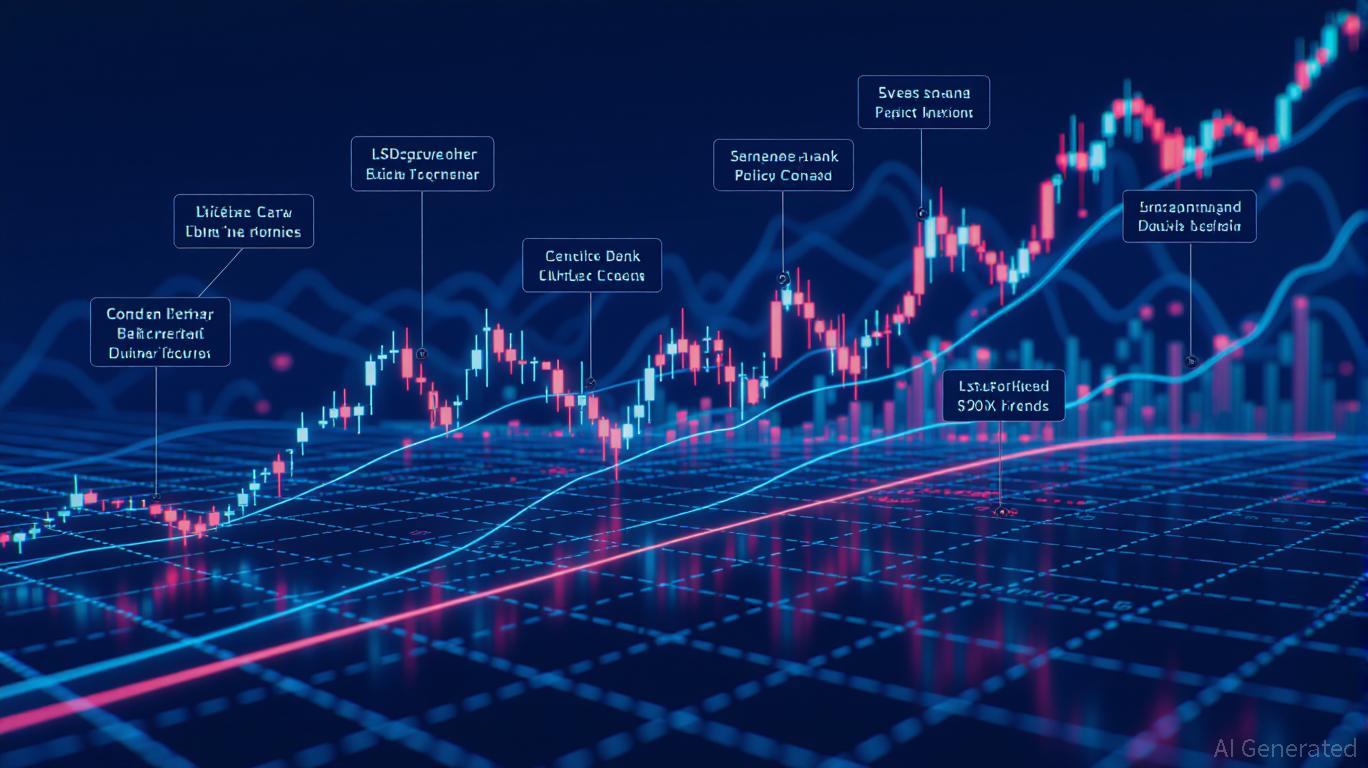MMT Price Forecast Fluctuations in Late 2025: Effects of Macroeconomic Changes and Central Bank Decisions on Token Values
- 2025 crypto markets face instability from algorithmic stablecoin de-pegging (e.g., USDsd) and central bank policy shifts under Modern Monetary Theory (MMT). - De-pegging events trigger systemic risks, prompting stricter regulation on uncollateralized stablecoins as central banks prioritize stability over innovation. - Macroeconomic uncertainty and AI-driven cyber threats (e.g., UNC1069 malware) amplify volatility, challenging token valuations amid regulatory and geopolitical risks. - BIS advocates hybrid
By the end of 2025, the cryptocurrency sector is characterized by turbulent interactions among algorithmic stablecoin de-pegging incidents, shifts in central bank strategies, and broader economic changes. These factors have made token pricing increasingly intricate, with Modern Monetary Theory (MMT) concepts playing a growing role in how both regulators and investors assess systemic threats. As algorithmic stablecoins such as USDsd encounter liquidity shortages and lose their pegs, the wider digital asset market has seen increased volatility, leading central banks to revisit their regulatory approaches and monetary policies.
Algorithmic Stablecoins and the De-Pegging Crisis
Algorithmic stablecoins, which aim to keep their value aligned with fiat currencies by adjusting supply through algorithms, have faced significant liquidity issues in 2025. The loss of USDsd’s peg, for example, revealed flaws in decentralized governance and reserve-based systems, causing ripple effects throughout the crypto landscape, as highlighted in a
Central Bank Policy Responses and
MMT
Frameworks
In 2025, Modern Monetary Theory (MMT) has become a key framework for analyzing how central banks address liquidity and systemic risk. MMT stresses the importance of state intervention to ensure monetary flexibility and uniformity—principles that challenge the decentralized ethos of algorithmic stablecoins, as discussed in a
Nevertheless, the BIS points out that stablecoins frequently do not meet the "three pillars" of a sound monetary system: singleness (universal acceptance), elasticity (ability to process large transactions), and integrity (protection against abuse), as outlined in the BIS report. This has led to increased calls for tighter regulation, with central banks taking a more active role in safeguarding trust as finance becomes more tokenized, per the BIS report.
Macroeconomic Shifts and Token Valuations
Shifts in politics and the global economy during 2025 have added further complexity to token pricing. The possible return of the U.S. Democratic Party has sparked fears of stricter crypto regulations, a departure from the more crypto-friendly stance of previous governments, as described in a
At the same time, cyber risks driven by artificial intelligence—such as AI-based malware identified by Google’s Threat Intelligence Group—have added new dimensions of risk. These advanced tools, used by groups like UNC1069 to compromise crypto wallets, highlight the ongoing fragility of digital asset security and have further shaken investor trust, as noted in a

The Road Ahead: Balancing Innovation and Stability
For those investing in crypto, the intersection of MMT-inspired central bank actions and shifting macroeconomic conditions calls for a sophisticated strategy. While algorithmic stablecoins encounter increasing regulatory barriers, tokenized solutions from central banks present a potential route to greater stability, as discussed in the BIS report. The BIS’s focus on “next-generation monetary systems” indicates that 2025 may see a blended approach, where private sector innovation operates alongside public regulatory safeguards, per the BIS report.
Still, achieving equilibrium will not be easy. The RBI cautions that unchecked growth of stablecoins could weaken the effectiveness of monetary policy, especially in developing economies where crypto adoption is accelerating, as mentioned in the RBI report. Investors must also navigate geopolitical threats, such as North Korea’s use of AI-driven crypto theft, which could further destabilize token values, according to the Google report.
Conclusion
The turbulence of 2025 marks a critical juncture for digital assets. The de-pegging of algorithmic stablecoins has revealed deep-seated vulnerabilities, while central banks are adapting their policies with MMT-based frameworks. The future of token valuations will depend on how well regulatory measures and technological progress are balanced. Investors who prioritize liquidity, security, and macroeconomic awareness may discover opportunities in a market still searching for its footing.
Disclaimer: The content of this article solely reflects the author's opinion and does not represent the platform in any capacity. This article is not intended to serve as a reference for making investment decisions.
You may also like
Worldcoin (WLD) Bounces Off Key Support — Could This Pattern Trigger an Upside Breakout?

Columbia Study Flags High Rate of Wash Trading on Polymarket

Japan’s FSA To Tighten Crypto Lending Rules, Proposes Limits For IEOs
Arweave (AR) price forecast as it rides the DePIN sector momentum
